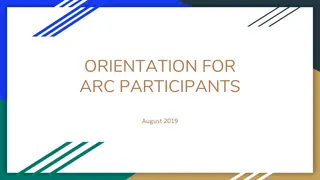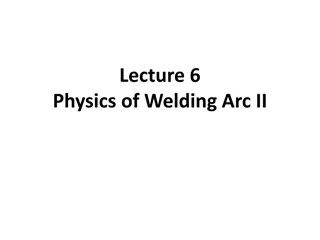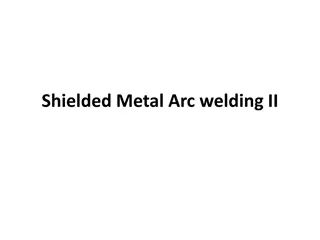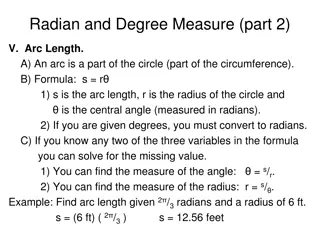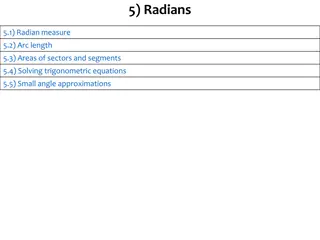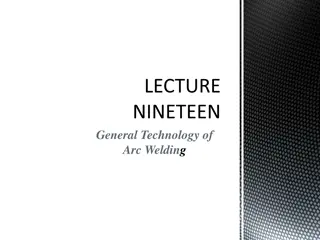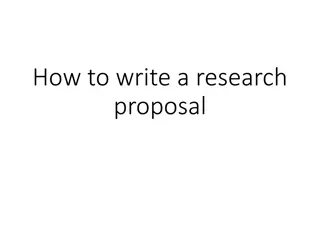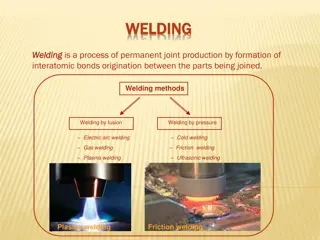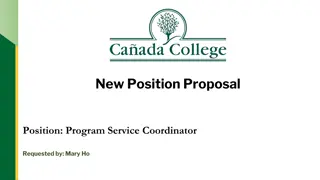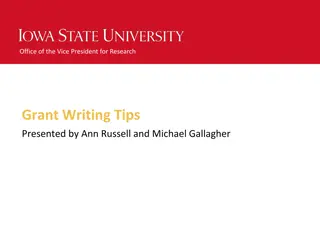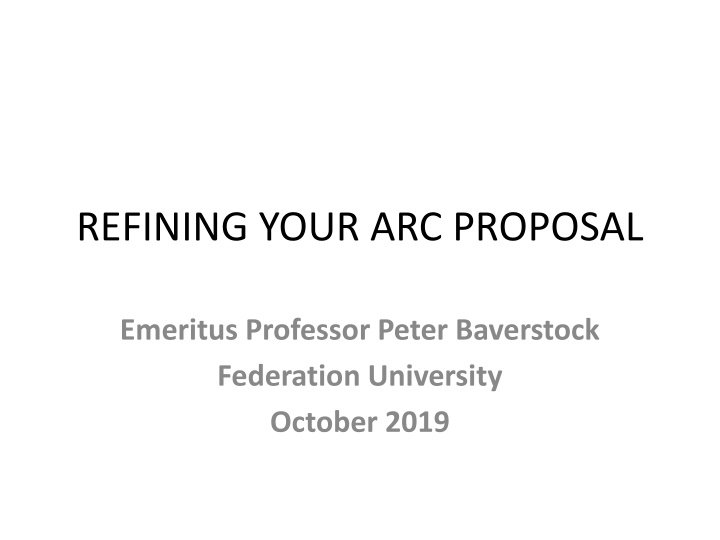
Crafting Successful ARC Research Proposals: Comprehensive Guide
Discover expert guidance on refining ARC research proposals from Emeritus Professor Peter Baverstock of Federation University. Explore key components including scheme overviews, submission advice, assessment processes, and crucial distinctions between significance and benefits. Understand the intricate evaluation methods involved in ARC proposal assessments to maximize your chances of success.
Download Presentation

Please find below an Image/Link to download the presentation.
The content on the website is provided AS IS for your information and personal use only. It may not be sold, licensed, or shared on other websites without obtaining consent from the author. If you encounter any issues during the download, it is possible that the publisher has removed the file from their server.
You are allowed to download the files provided on this website for personal or commercial use, subject to the condition that they are used lawfully. All files are the property of their respective owners.
The content on the website is provided AS IS for your information and personal use only. It may not be sold, licensed, or shared on other websites without obtaining consent from the author.
E N D
Presentation Transcript
REFINING YOUR ARC PROPOSAL Emeritus Professor Peter Baverstock Federation University October 2019
PRESENTATION IN 3 PARTS 1. Overview of the schemes and processes 2. Detailed guidance on submission 3. Useful hints
PART 1: Overview Both ARC DP and ARC DECRA are part of the ARC DISCOVERY scheme. Emphasis on DISCOVERY contribution to an important gap in knowledge or significant problem. Significance.
Part1 - contd Significance differs from Benefit Benefit:- New knowledge resulting from research Economic, commercial, environmental, social and/or cultural benefits
Part 1 - contd So distinguish between Significance and Benefit Significance the importance of the gap in knowledge that you are filling Benefit means Benefit of the research.
THE ASSESSMENT PROCESS Your proposal goes to one of 5 Panels of the College of Experts Biological Sciences and Biotechnology Maths, Physics, Chemistry and Earth Sciences Engineering, Information and Computing Social, Behavioural and Economic Sciences Humanities and Creative Arts Around 15 members on each Panel in each scheme
The Assessment Process (contd) Your proposal goes to the Panel most appropriate for your proposed research; and the Chair will allocate it to the 2 Panel Members closest to your area, taking due account of COI. Each Panel Member receives 100+ proposals!!!! The 2 Panel Members will RANK your proposal on each of the Selection Criteria NOTE these 2 Panel Members will most likely NOT be expert in your area
The Assessment Process (contd) Your proposal also goes to 4 Assessors who are, as near as possible, experts in your area, taking due account of COI The 4 Assessors will each score you on each of the Selection Criteria. The 4 Assessor Scores are then averaged for each SC, and the 2 Panel Member scores averaged, and then an average of each.
The Assessment Process - contd MAIN POINT the Panel Member scores are worth double each Assessor s scores! Moreover, where there is uncertainty about the proposal ranking, the entire Panel gets involved. Therefore it is critical that you pitch your proposal to the Panel Members who are not experts in your area.
ASSESSMENT PROCESS contd The Discovery scheme is HIGHLY COMPETITIVE Success rates around 20% Many excellent proposals just miss out.
SELECTION CRITERIA DECRA 50% 25% 15% 10% DP 35% 40% 15% 10% Investigator/Capability PQI Benefit Feasibility
PART 2 THE APPLICATION REMINDER:- Significance means the Importance of the knowledge gap you intend to fill Benefit means economic, social, environmental Benefit
PART 2 - contd Because the Panel Member scores are double the Assessor scores, it is imperative that you pitch your proposal to the Panel Members, who are:- 1. Not experts in your area 2. Are reading and ranking around 100 proposal!!!!!!
PART 2 - contd As a general Rule, pitch the ENTIRE proposal to Panel Members who are not expert in your area and are reading and assessing over 100 proposals, except for the APPROACH AND METHODOLOGY which you pitch to the Assessors. Assessors scored 40% of proposals in Band A for Significance; Panel Members scored 7% in Band A. MESSAGE Applicants are good at explaining Significance to Experts in their area but not non- experts.
PART 2 - contd TITLE Try to convey either the Significance or the Innovation in the Title. Use words such as unravelling , solving , novel
PART 2 - contd A4 SUMMARY a very important part of the proposal because 2ndthing read! Suggested structure: What is the problem to be solved? Why is it an important problem to solve? (Significance) What is the Aim of this study? What is innovative about this study? What are the Expected Outcomes (Benefits)?
AIMS AND BACKGROUND Suggested structure:- What is the problem ? - page Why is it an IMPORTANT problem to solve? (Significance) 1 paragraph What is the Aim of this project? 1 sentence in a paragraph of its own bolded. What is Innovative about our approach? 1 para Why are we the team to do it? 1 para
INVESTIGATORS (DP) Link Role to Expertise:- Professor X is a world leader in Here she will ..
PROJECT QUALITY AND INNOVATION Suggested Structure 3 subheadings: Significance why is this an important problem to solve? An important knowledge gap to fill - - 1 page Approach and Methodology around 3 pages must be very detailed. Justify NUMBERS Innovation what is novel about our Approach. Must EXPLAIN the novelty. page
FEASIBILITY Main points:- Link role to Expertise Talk about the Research Environment both physical and intellectual. (NOTE RE means RE for this project.)
BENEFIT AND COLLABORATION To the extent that it is feasible, try to QUANTIFY the Benefit as opposed to Arm Waving. At the very least try to JUSTIFY your claims. Remember that just New knowledge resulting from research is a potential Benefit.
COMMUNICATION OF RESULTS 1 brief paragraph is not a Selection Criterion
MANAGEMENT OF DATA The University will provide a template??? Again one brief paragraph not a Selection Criterion.
ROPE BLOW YOUR OWN TRUMPET!!!!!!! backed up by EVIDENCE
ROPE D7 The Instructions are fairly self-explanatory. 3 hints:- To describe interruptions see paper by Emily Nicholson For prizes and awards, give DETAILS of the award how many, how often, by whom, national or international. For Contributions give evidence for claims.
ROPE D9 10 best Focus on publications in HIGH QUALITY JOURNALS. Ensure you are senior author on most
BUDGET JUSTIFICATION Justify everything. Relate back to the Approach and Methodology. Eg if you say you want a postdoc, explain why a Research Assistant will not do.
PART 3 GENERAL HINTS 1 NO ACRONYMS!!!!!! 2. Short paragraphs In good grant writing, you have one idea per paragraph (that way the reader can tell when you have moved on from one idea to another) maximum 6 lines per paragraph
PART 3 - contd Pitch all of the proposal, except APPROACH AND METHODOLOGY, to non-experts. Show your proposal to as many people you can convince to read it INCLUDING NON- EXPERTS. Ask them SPECIFICALLY have I made a good case for the Significance of the proposed research
PART 3 - contd Use Harvard Referencing especially now that ROPE SC specifically refers to Capability And bold your name where cited And do not lose yourself in et al. For multi-authored papers use Smith, Baverstock, et al., 2016.
PART 3 - contd Try to have two DPs submitted
PART 3 - contd If proposal fails to get up, do not give up!!!! Remember, the process is VERY competitive. Taking on board comments from Assessors and honing your proposal further might get it over the line next time. I know of DPs that got up the 4thtime!


